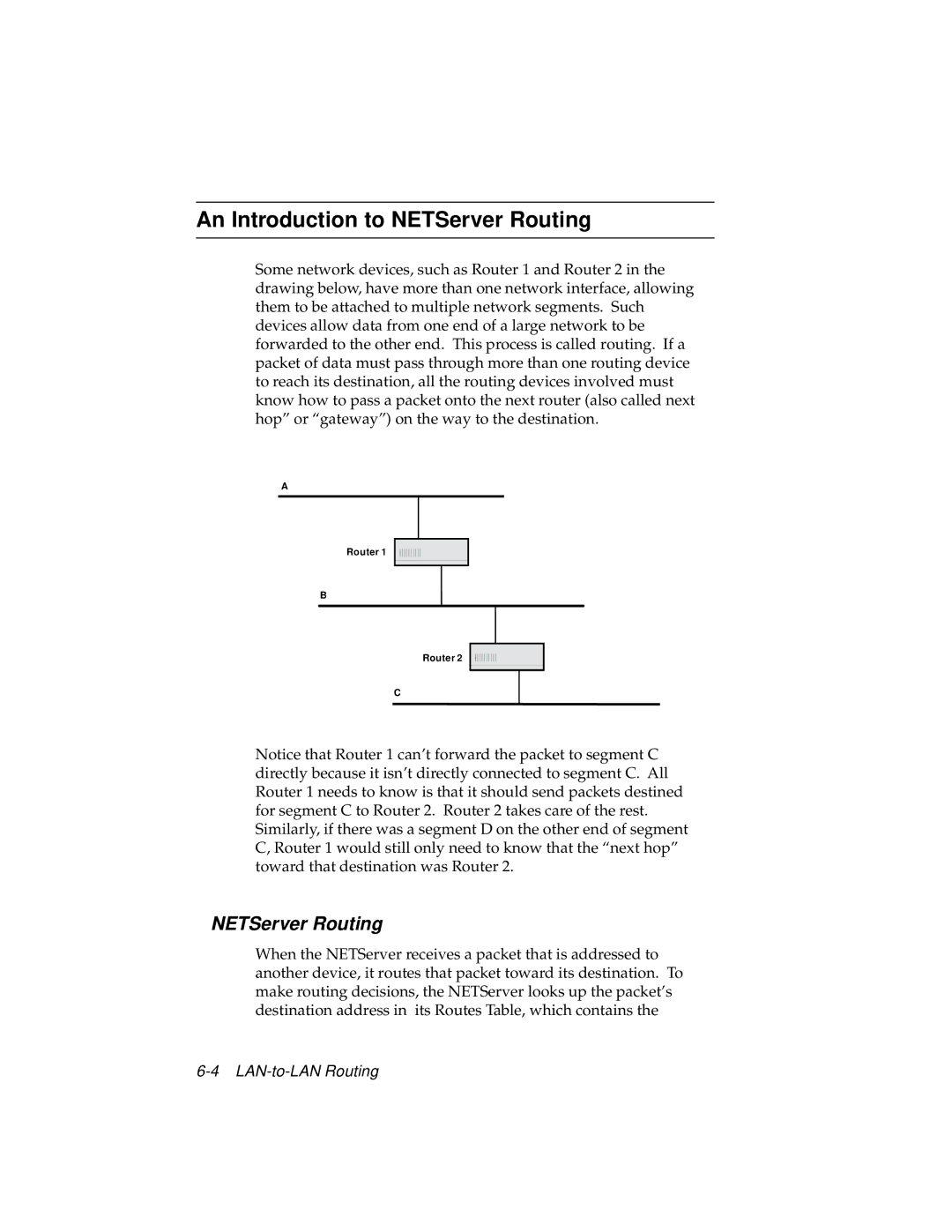
An Introduction to NETServer Routing
Some network devices, such as Router 1 and Router 2 in the drawing below, have more than one network interface, allowing them to be attached to multiple network segments. Such devices allow data from one end of a large network to be forwarded to the other end. This process is called routing. If a packet of data must pass through more than one routing device to reach its destination, all the routing devices involved must know how to pass a packet onto the next router (also called next hop” or “gateway”) on the way to the destination.
A
Router 1
B
Router 2
C
Notice that Router 1 can’t forward the packet to segment C directly because it isn’t directly connected to segment C. All Router 1 needs to know is that it should send packets destined for segment C to Router 2. Router 2 takes care of the rest. Similarly, if there was a segment D on the other end of segment C, Router 1 would still only need to know that the “next hop” toward that destination was Router 2.
NETServer Routing
When the NETServer receives a packet that is addressed to another device, it routes that packet toward its destination. To make routing decisions, the NETServer looks up the packet’s destination address in its Routes Table, which contains the
